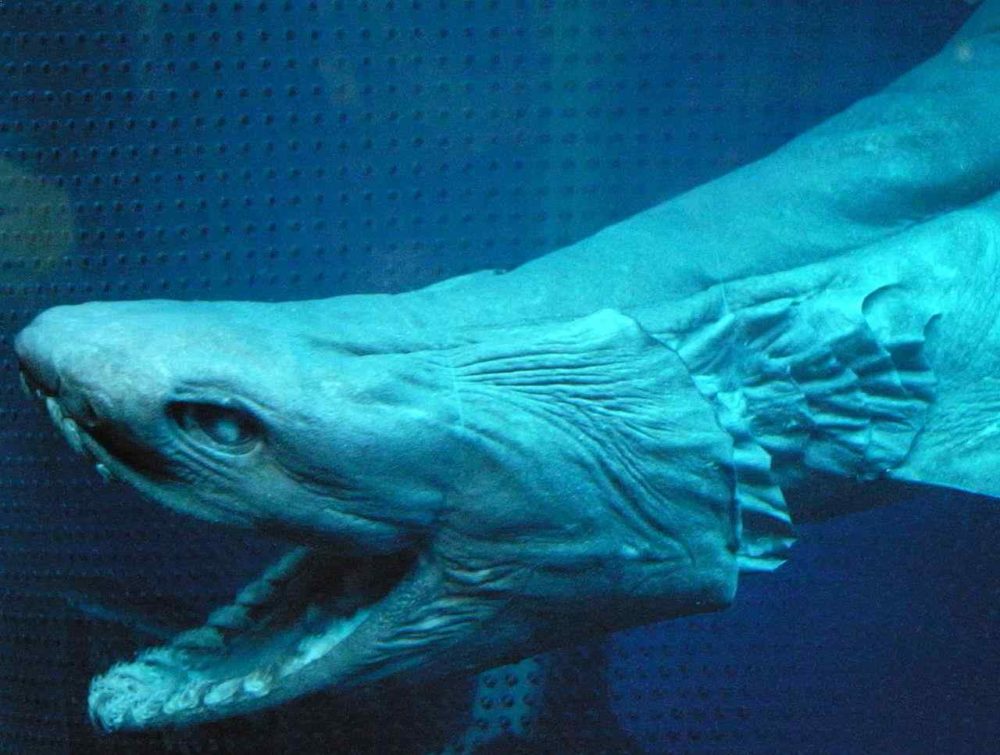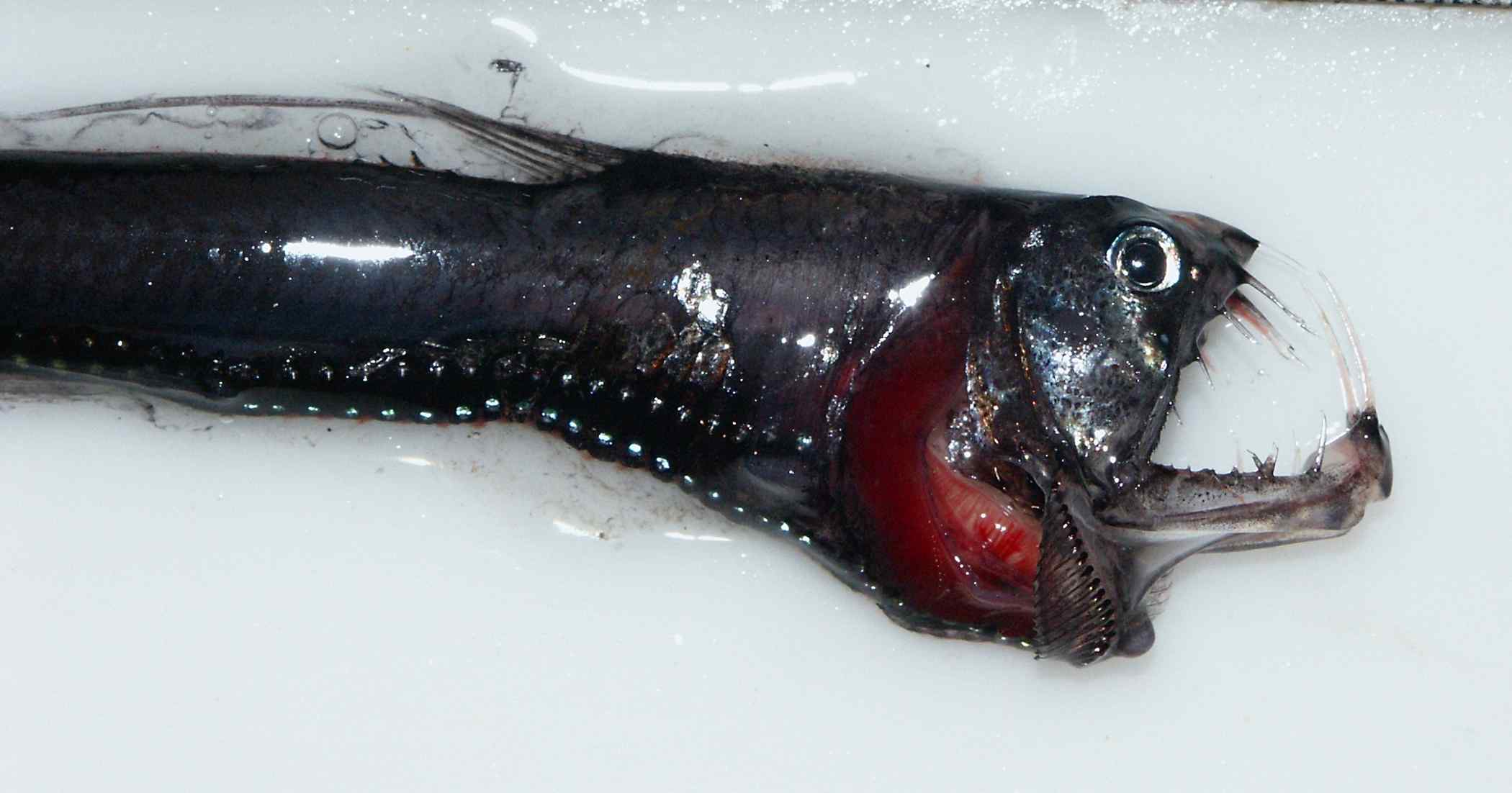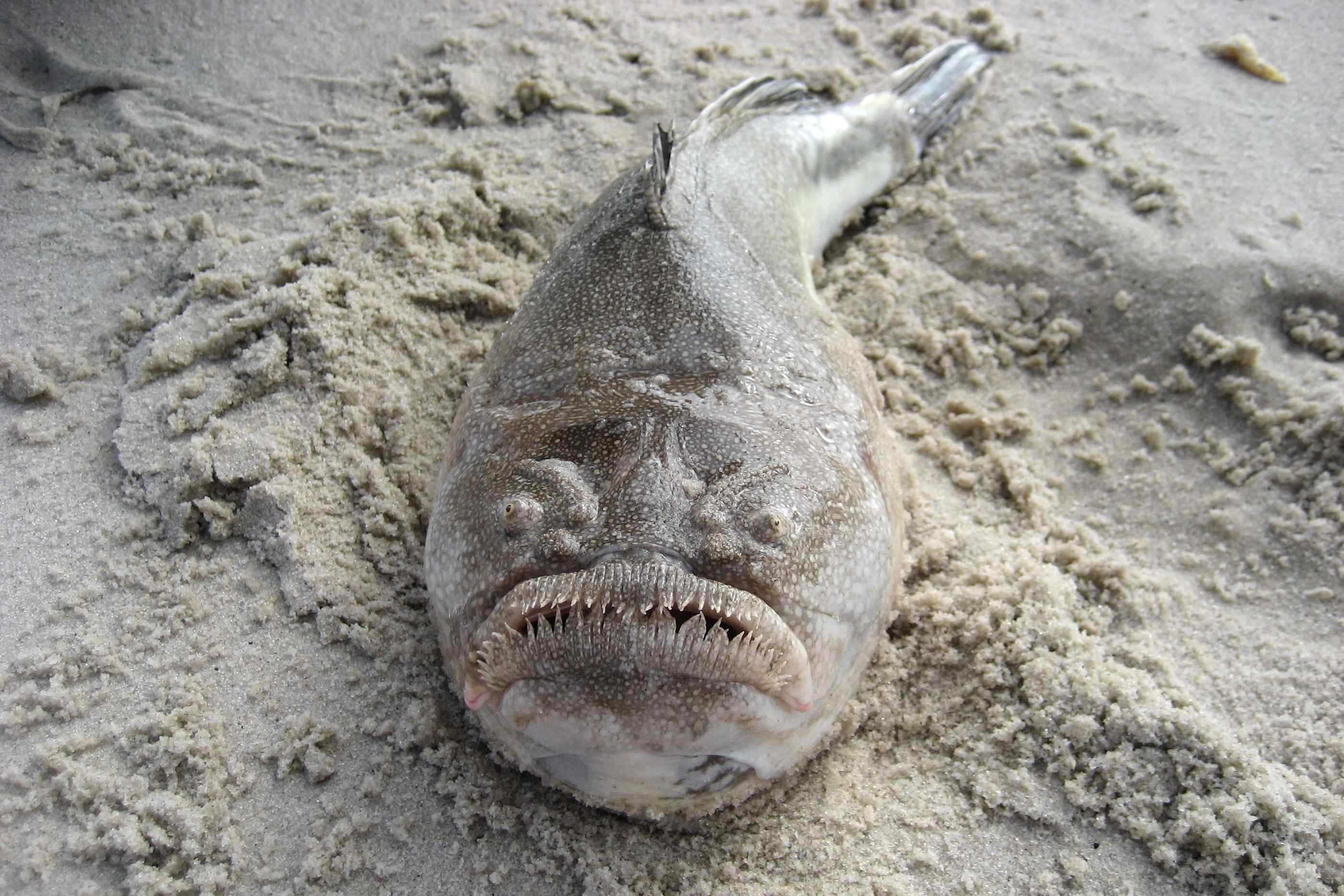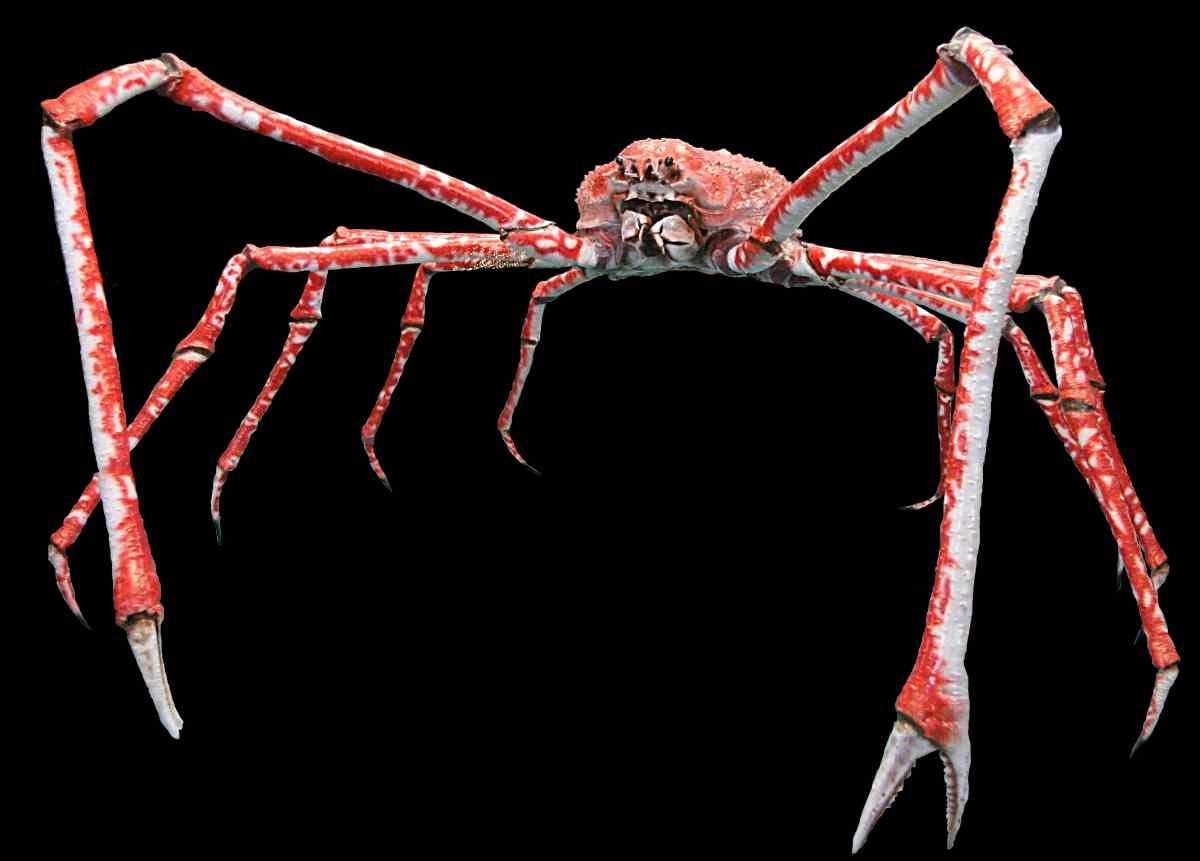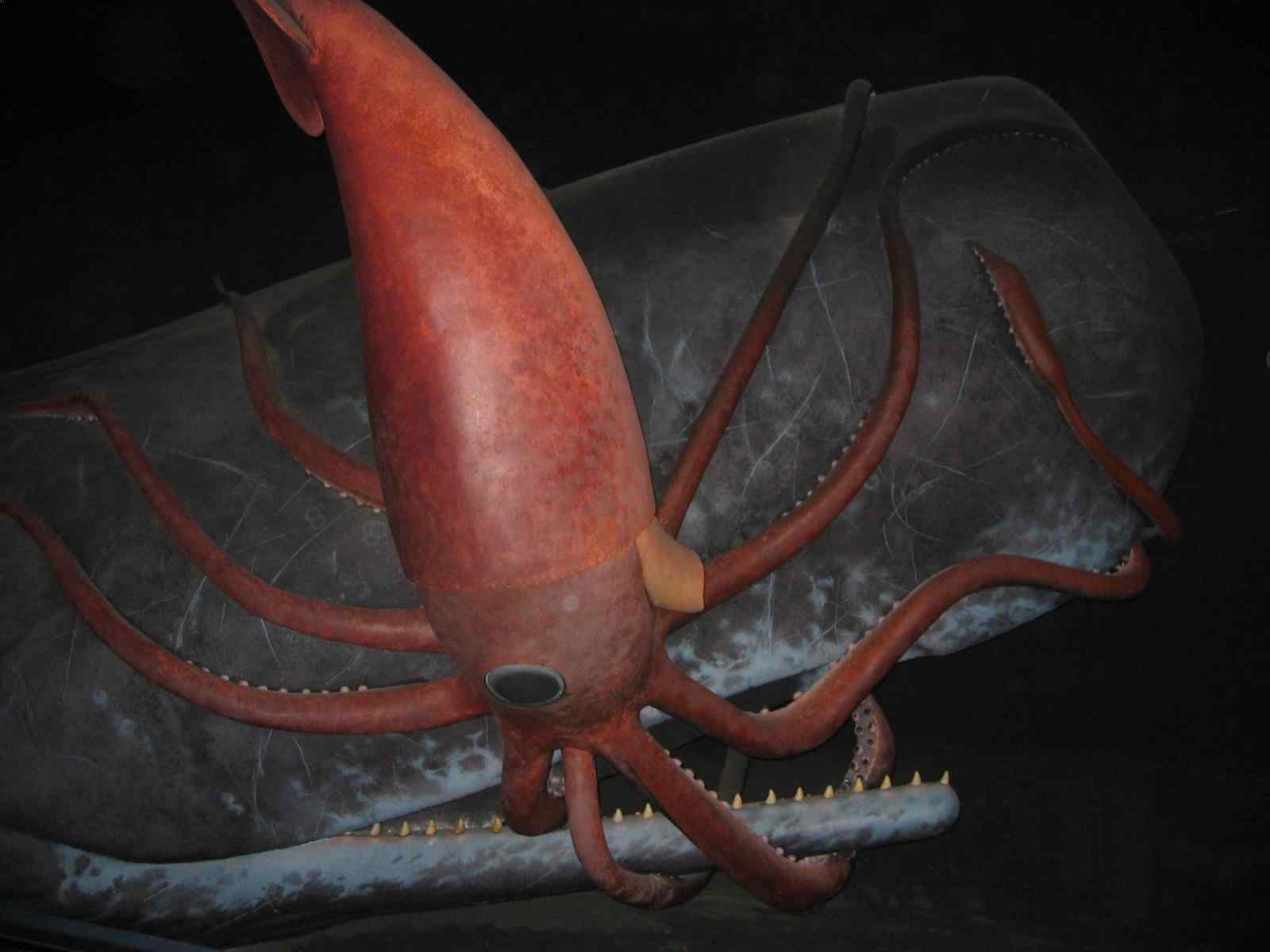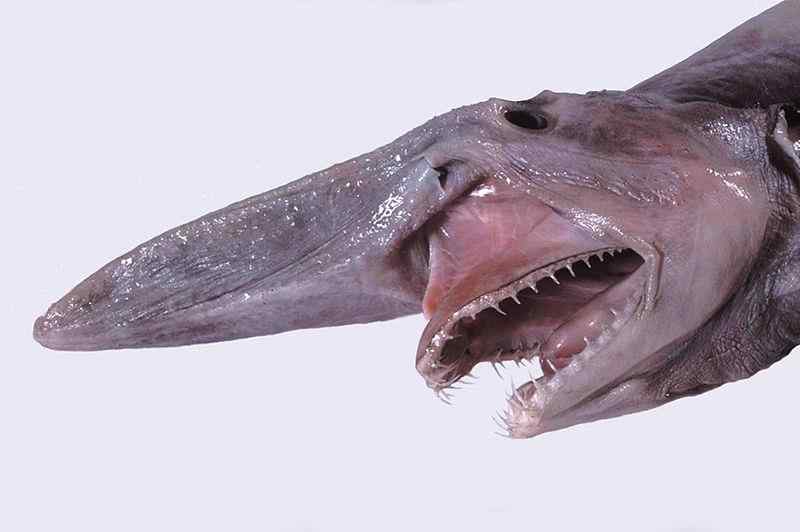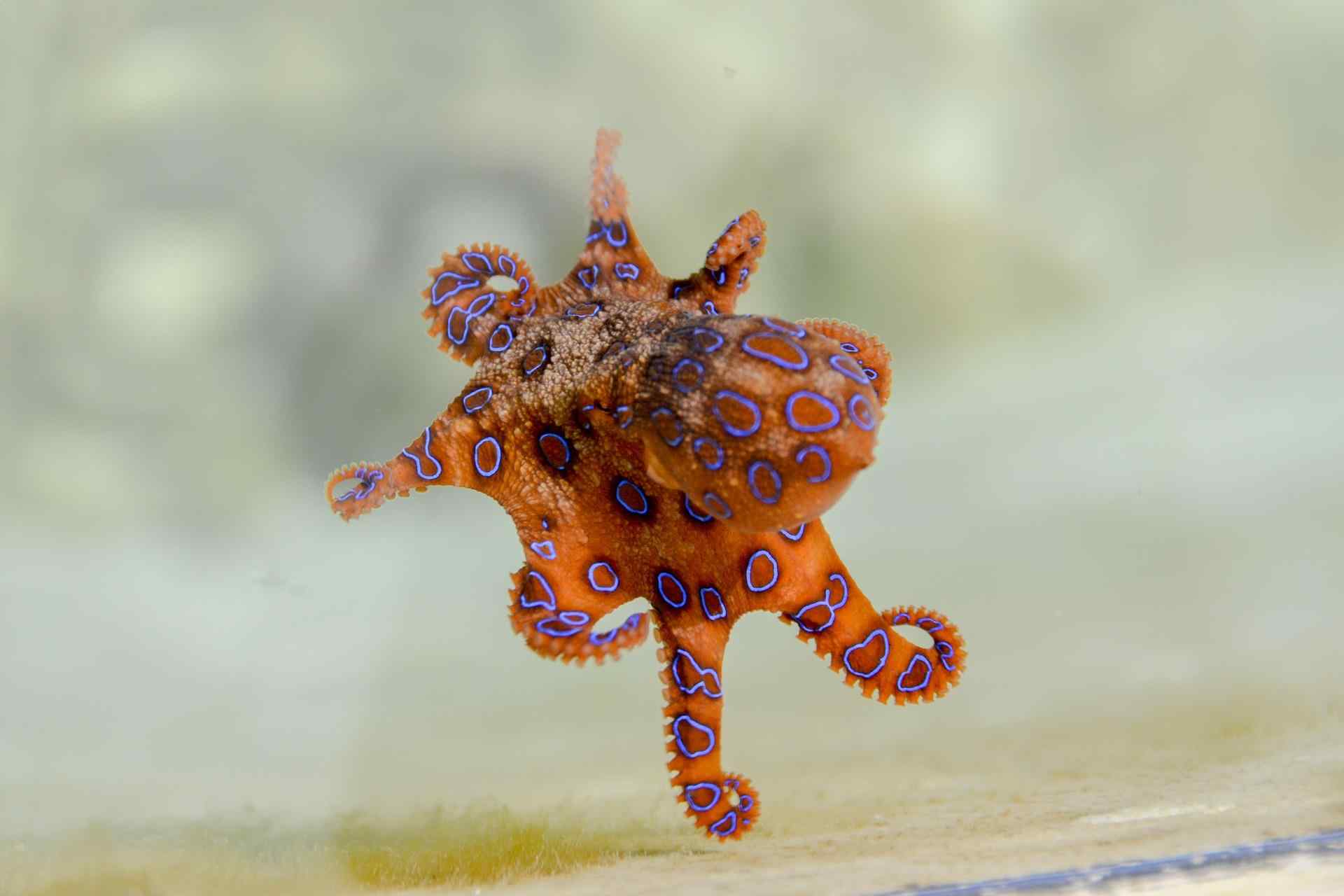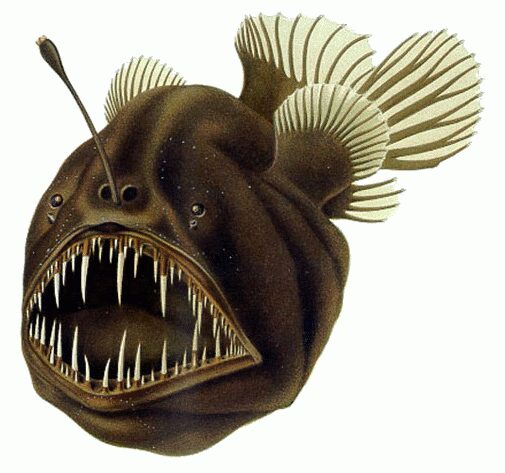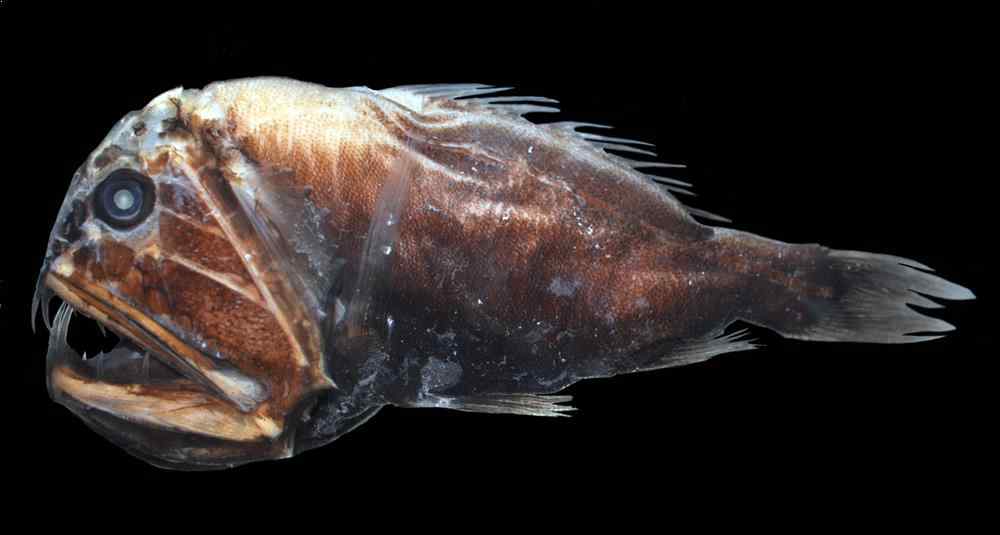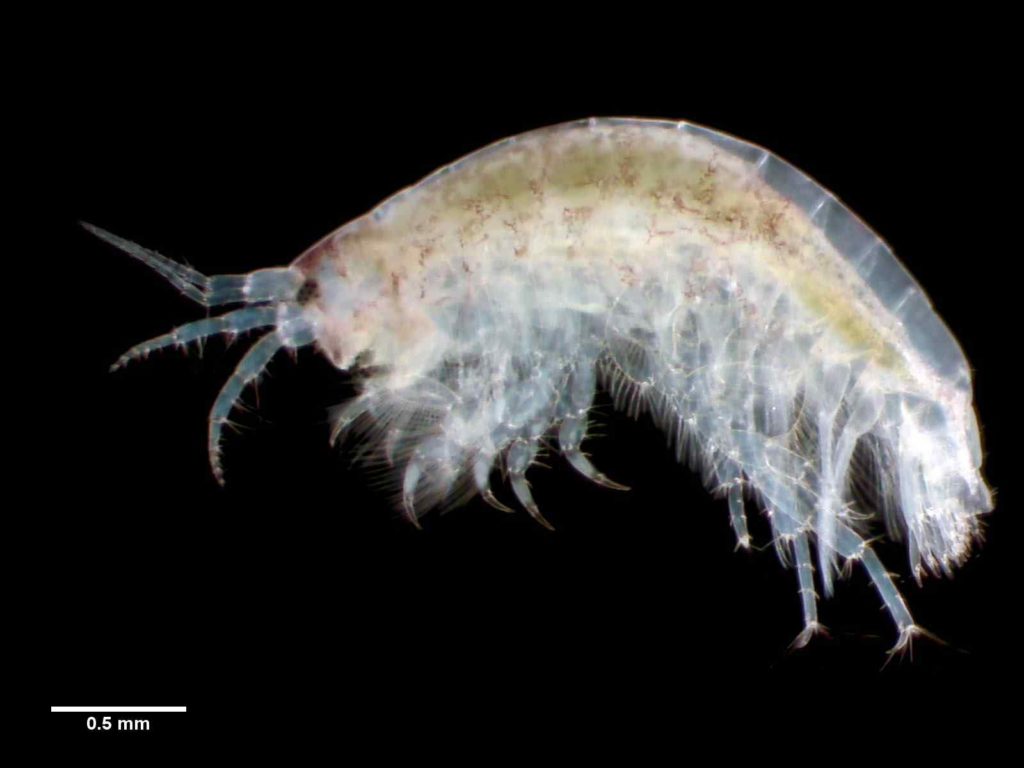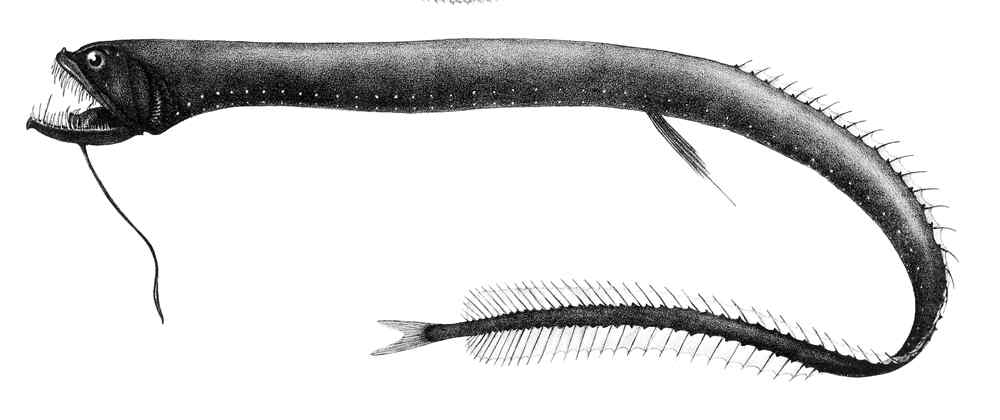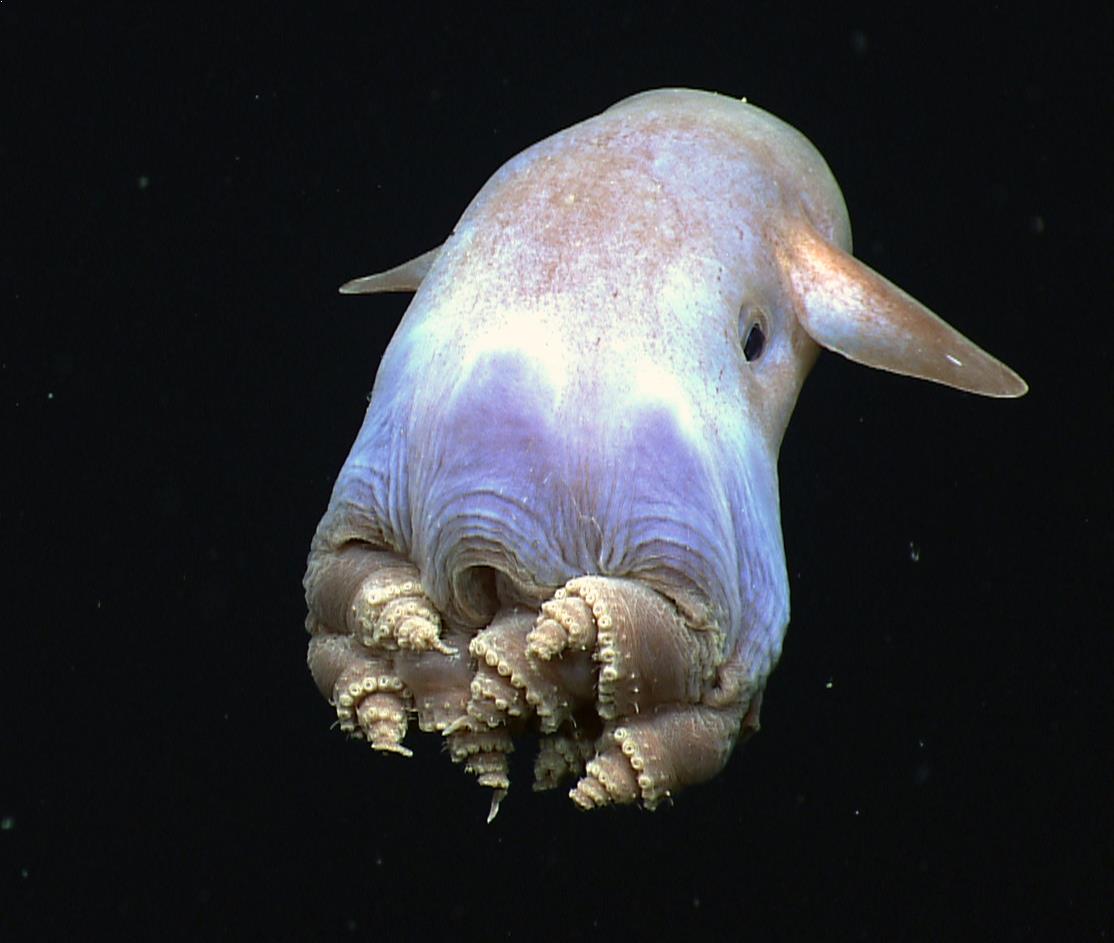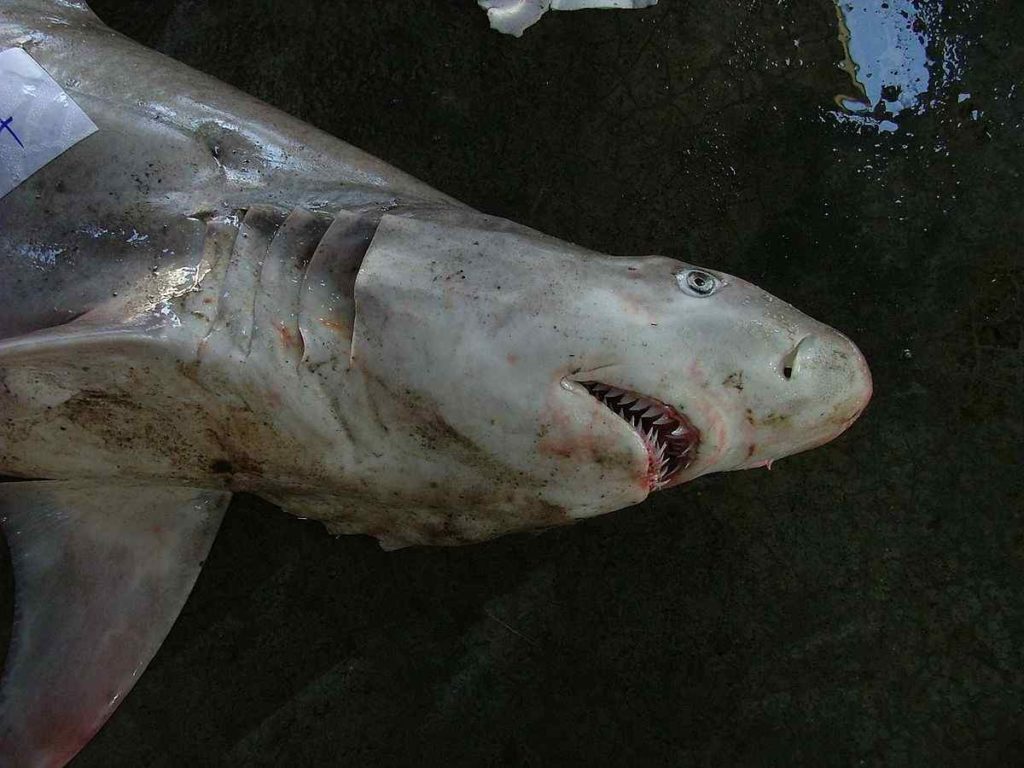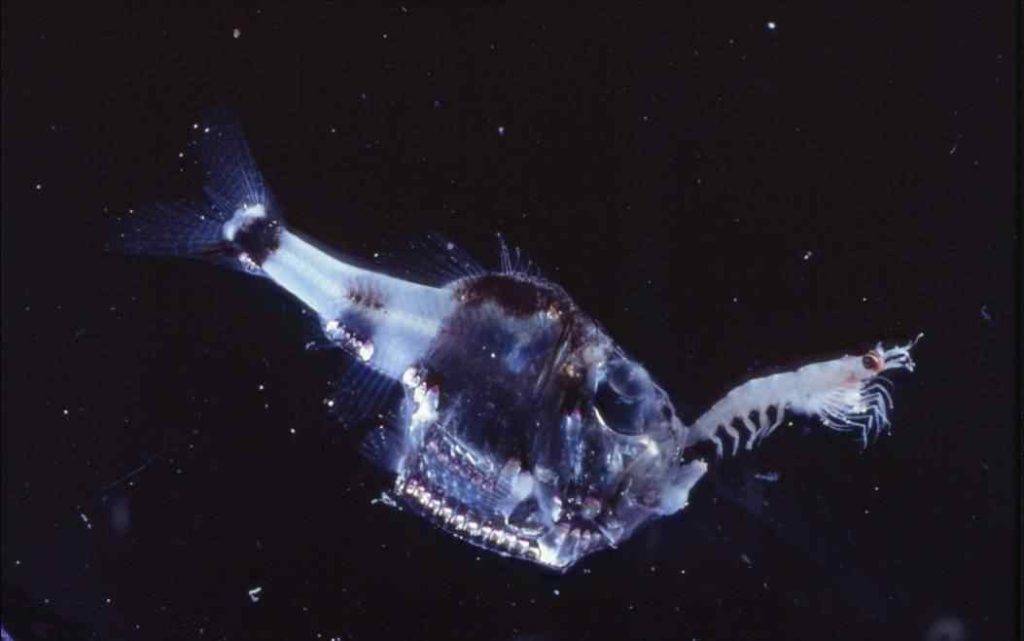There are many terrifying and dangerous animals that live on Earth. Also, there are many intelligent and smartest animals are there to accompany us on this planet. Have you ever given a thought about the Oceans? There are many dangerous and terrifying deep sea creatures found in Oceans. They are very deadly animals in their own way. Let me give you a few examples, have you ever heard the name of Giant Squid? The only predator of Giant Squid is the sperm whale. The battle between both of them is one of the major deep-sea battles. Here is another one, Vampire Squid has the largest eyes of all animals in the world. It has intensely red eyes and cloak-like webbing. It is one of the terrifying deep-sea creatures. The ocean is full of deep and full of terrifying creatures. So, here we are listing the top 20 most terrifying deep-sea creatures.
Deep-Sea Creatures
1. Frilled Shark
Frilled Shark usually found thousands of feet below the surface. They are very similar to sharks but they have very dangerous three-pointed teeth. Along with terrifying deep-sea creatures, we have also listed beautiful fishes in the world. Frilled Shark can be caught inside 1,570 meters inside the sea but in Suruga Bay located in Japan, it is usually seen at a depth of 50 to 200 meters. Additionally known as “living fossil” comes under the family Chlamydoselachidae and mostly seen in the Atlantic and the Pacific Ocean and loves eating cephalopods and bony fishes.
Talking about the appearance, the frilled shark has a flattened head and a largemouth. There are around 300 teeth arranged in 25 rows pointing in a backward direction. The shark’s body is elongated in nature with brown or ey in color. Usually all sharks don’t have a nictitating membrane that is a thin but tough membrane considered as an eyelid that moves horizontally with the eye, However, the frilled shark has it and it uses to protect its eyes during potentially dangerous situations. The skeleton of the species contains less calcium maybe because it lives in the deep sea which is poor in nutrients. You can also visit aquariadise.com for more facts about fishes and the ocean.
Also Read: 10 Most Scariest Looking Fishes in The World
2. Viperfish
Viperfish is generally characterized by its long needle-like teeth. They can grow up to 30 to 60 cm. It is one of the terrifying deep sea creatures found inside the sea. Viperfish usually found below the sea in the daytime and it will go very deep at night. They are usually found in tropical and temperate waters and can be seen in many colors varying from green, silver, and black. The species can swim at a speed of two body lengths per second. Viperfish have a light-producing organ called photophores which help them in attracting prey. It usually found on the ventral side of the body. It has a ferocious appearance and can grow up to 11 or 12 inches (30 centimeters) in length.
Talking about the appearance, the body is dark silvery blue in color, However, the color can vary from green to silver or black. The species is equipped with large teeth that help them in surviving in darkness. Generally, Viperfish has been seen hanging motionless in the water and only waving their lures located over the head attract meals. They love to eat crustaceans and small fish. During the daytime, Viperfish can be seen deep inside the water usually 5,000 feet (1,500 meters), however, during they come at about 2,000 feet (600 meters) where they have more options for meals and food is plentiful.
3. Stargazer fish
Stargazer fish are usually known for their unique way of attacking. They bury themselves inside the sea and waits till the fish swim right over them and at that point, they come up and eat them. Now you are thinking about why they are terrifying? Please look at the picture. They belong to the family Uranoscopidae of perciform fish and their head permanently points in the upward direction. Talking about the appearance, the eyes are situated on top of their heads. The body is the species that is dull brown in color, however, it is elongated and round in shape. An upper part of the body is darker than the lower part. The head is comparatively larger in size but is flat on its sides.
The size of the viperfish ranges from 18 – 25cm but some of them have been seen as long as 90cm. It makes himself buried inside the sand or mud on the ocean floor. It makes his body in such a way that only eyes and mouth are visible. The creature is poisonous and the two large poison spines are located on each pectoral fin. The poison spines produce electricity and can deliver electric shocks. The species love to eat a variety of fish and also other creatures like crabs that are found in marine water. It generally waits for the prey to pass through its head while it was buried inside the sand of the ocean floor. As soon as the prey comes closer it suddenly jumps and catches it. Stargazer fish breeds in spring and summer.
4. Gulper Eel
Gulper Eel is one of the strangest looking animals in the sea. They are scientifically known as Eurypharynx pelecanoides. The mouth of the Gulper Eel is very large as compared to its body. The species have very rarely seen humans in the sea and the unique feature of the Gulper Eel is its mouth which is larger than its body. It is also loosely hinged and can be opened very wide as soon as it sees the fish. Gulper Eel is also capable of swallowing fish larger than their size and uses the whip-like tail for movement. Talking about the appearance, Gulper Eel is black in color with a lateral white stripe on the body.
Additionally known as pelican eel generally seen at the depth of between 500 m and 3 km (1,640 feet) mostly in tropical and temperate seas. It is equipped with a luminous organ situated at the end of the tail because sunlight can reach that depth where they are normally found. The species can grow up to 80 cm long with a long thin body and comparatively large head. They have many rows of teeth with huge jaws that help them in catching prey by opening their largemouth. Gulper Eel is bad swimmers because of their body shape and can only on tail light to attract prey. It loves to eat fish, plankton, copepods, and shrimp.
5. Giant spider crab
Giant spider crab is the largest crab that lives up to 1000 ft. deep inside the sea. Now you are thinking about why they are terrifying? The answer is you ever get bitten by a normal crab. It will hurt for sure. Now see the picture and decide. they are generally found in the waters of Japan and have the greatest leg span among all the arthropods. The leg span of the spider can go up to 12 ft and they weigh around 42 pounds. It is the largest known crab species in the world and can live up to 100 years. In Japan, It is known as taka-ashi-gani that means “tall legs crab.”
It can be easily caught using small trawling nets, however, harvesting is banned during the spring because at that time brabs generally move deep waters to reproduce. There is a subsequent decline in the population of the species but efforts are being to protect them. Scientifically known as Macrocheira kampfaeri where ‘Macrocheira’ comes from two Greek words namely ‘makros’ meaning ‘big’ or ‘long’ and ‘cheir’ meaning ‘hands’ or ‘arms’. The species equipped with an exoskeleton that helps them to protect from larger predators such as octopuses. The population is abundant off the southern coasts of Honshu Island and that is the largest island of Japan.
You can also read: Animals That Could Disappear Forever
6. Giant squid
The giant squid is very large since it can grow up to 14m. They are equivalent to the size of the five-story building. They are terrifying because it is believed that they eat small whales. The problem is that small whales are not very small actually. Giant squid belongs to the family Architeuthidae. The male can grow up to 14m while the female can grow up to 10m. The first image of Giant squid has been taken by the Japanese researchers in its natural habitat and it has been believed that their many species of Giant squid exist but as per genetic research, However, only one species exist. The largest known squid species can be seen in all oceans across the world, however, as of now, they have been discovered in the Gulf of Mexico, the Sea of Japan, the Pacific Ocean, Hawaii, the southern oceans and California.
One of the biggest and dangerous deep-sea creatures, Giant squid can grow up to 59 feet in length making it one of the biggest animal on the planet. It weighs around one ton of weight and females are usually larger than males. You can imagine the size of Giant squid because they can be as long as a school bus. Talking about the appearance, It has a large head with eight arms and two tentacles used for grabbing prey. Also, they have strong jaws similar to a parrot beak. The species loved to eat other squids, fish and shrimps, however, according to different researchers they can also attack and eat small whales.
7. Goblin shark
One of the ugliest animals in the world, Goblin shark also called a “living fossil” and belongs to the family Mitsukurinidae. Goblin shark lives up to 1300 ft. deep inside the sea. They are terrifying because they can detach their whole mouth from the body in order to get their prey. There are many aquatic animals that have mind-blowing superpowers. They can grow up to 3.5m and loves hunting teleost fishes, cephalopods, and crustaceans. Talking about the appearance, They have a flabby body with small fins with nail-like teeth. It is quite different from other sharks in terms of appearance and probably the strongest looking and ugliest sharks in the oceans.
Goblin shark can be seen very rarely in the deep oceans and it is the only member of the family which is surviving rest all died out and hence sometimes referred to as “living fossil.” Scientifically known as Mitsukurina Owstoni because the first specimen has been seen on the coast of Japan in 1898 by a naturalist called Alan Owston. They have a pinkish appearance sometimes red when they are old because blood vessels can be seen through its skin, however, the red color in the deep is visible has black and helps them in catching prey. The camouflage color helps it hide in plain sight. It is visible in all oceans across the world and most visible in Brazil, the Gulf of Mexico, France, Portugal, and Senegal. Also, found off the coasts of Japan, South Africa, Taiwan, Australia, and even California.
8. Blue-Ringed Octopus
Blue Ringed Octopus is one of the most dangerous and terrifying deep-sea creatures found in the sea. The venom of the Blue-Ringed Octopus is extremely potent. One of the types called Glass Octopus listed as transparent animals on planet Earth. They are mostly found in the Pacific and Indian Oceans and known as one of the most poisonous animals. The size varies from 12 to 20cm famous among scientists for their yellowish skin along with blue and black rings on their bodies.
It can grow up to the size of 20 cm and its bite can cause paralysis in the muscles of the human body and can easily kill them. It is deadly because of its saliva that contains (spit). The species love to eat prey such as crustaceans and fish, however, for grabbing the prey they will bite them to inject venom and sometimes it just releases saliva in the water and them waits for the venom to paralyze its victims. One of the deep sea creatures mostly seen in rocky shores from Australia to Japan. They have bright blue rings on the body and hence the name.
9. Humpback anglerfish
Humpback anglerfish are one of the terrifying deep sea creatures because of the looks. Just see the picture once. Humpback anglerfish lives up to 2000m below the sea. They used to light its prey with light from the strange antenna located at its head. Anglerfish is one of the bioluminescent animals on planet Earth. Humpback anglerfish belong to the family Melanocetidae and also known as humpback black devil and Johnson’s anglerfish. They are seen in all the oceans of the world and have a strange-looking antenna on their head which helps them to locate their prey.
One of the deep sea creatures comes up with big mouth and a flexible body. They can swallow prey that is twice its size. Talking about the appearance, the species are grey to dark brown in color and have a large-sized head with a big crescent-shaped mouth full of sharp teeth which are translucent. It can grow up to a size of 1 meter. The female anglerfish is much bigger than the male species. It was first identified by the English naturalist James Yates Johnson and hence it is scientifically known as Melanocetus Johnsonii. It attracts its prey with the help of bioluminescence of the esca that produces symbiotic bacteria and when surrounding are dark he glowing esca attracts the prey. The population of the species is widely distributed in almost all oceans across the world. The species have a lateral line that can sense the pressure and movements in the surrounding of the ocean.
10. Fangtooth fish
Fangtooth fish are the deepest living fish ever found. They can survive 5,000 meters below sea level. The pressure at that point is 500 times that of land. Their teeth are in proportion to their body size making them one of the terrifying deep-sea creatures. The species belong to the family Anoplogastridae and known to be a close relative of the fish. One of the deep-sea creatures have the strongest and largest teeth among all fish varietiesaccprdint to the size and known to be the deepest living fish ever discovered. Talking about the appearance, the head and mouth of the fish is very large and the head consists of multiple mucus cavities.
The eyes are situated on the top of the head and comparatively smaller in size. The spies have a lateral line function to detect movements and vibrations in the oceans. They love to thrive in oceans with tropical and temperate temperatures. It can go as deep as 5000 meters and hence one of the deepest living species creatures in the world. It generally avoids sunlight and only goes the ocean surface during the night. Despite its dreadful appearance, the species is harmless to humans. The Fangtooth fish has scales in its skin which are shaped like plates. The fins are small and spineless. The predators of the fish are Tuna, Marlin and a few shark species. Let us discuss how Fangtooth fish catches its prey, It is through the chemo-reception method, however, sometimes they fail to the prey through this method. They love to eat Squid and fish and locate its prey by detecting chemical signatures of other fish varieties in the water.
11. Amphipod
Scientifically known as Gammarus roeseli, the Amphipod means “different-footed” and can grow up to size from 0.1 to 34 centimeters. They are mostly seen in all aquatic environments where around 750 species live in caves and that also includes terrestrial animals and sandhoppers such as Talitrus saltator. Talking about reproduction and lifecycle, mature female bear a marsupium or brood pouch that hold her eggs and later they are fertilized until the young ones are ready to hatch. There are no larval stages and the eggs hatch directly into a juvenile form along with sexual maturity reached after 6 molts.
12. Pacific Blackdragon
Pacific Blackdragon mostly saw in the southern hemisphere and prefers to live in temperate and subtropical waters. One of the deep sea creatures is usually seen at a depth of 6,562 feet or 2,000 meters from the ocean surface. Occasionally they swim to the surface water following prey such as small crustaceans or small fish. The fish species is also known for its unusual traits like they are sexually dimorphic means males and females are extremely different from each other not just in looks but also in feeding habits and other aspects as well.
13. Dumbo Octopus
A type of Octopus that was named after Walt Disney’s famous character Dumbo the elephant because of its ear-like fins. As of now, there are around 37 different species of dumbo octopi and it can be seen in all types of oceans. The deep seas creature is small in size and mostly 8 inches in length. Talking about the appearance, it has a soft, head-shaped body with 8 arms. All arms are connected with a flap of the skin. The length of the suckers can differentiate between the male and female species. The color of the body can be red, green or orange. The average lifespan of the species can be 3 to 5 years.
14. Snaggletooth
Also known as fossil shark is a species of weasel shark and belongs to the family Hemigaleidae. One of the deep sea creatures mostly seen in the Indo-West Pacific that includes the Red Sea from southeast Africa to the Philippines and even to the north of China and south to Australia. They can be seen at a depth of from 1 to 130 meters and sometimes can be found near the bottom of the water column of coastal areas including continental and insular shelves. The species can grow up to 240 cm, however, the species can be rarely seen.
Image Source: Wikimedia
15. Hatchetfish
The deep-sea fish can be seen in all oceans around the world and there are around 45 different species of hatchet fish. Among all species, the largest known is giant hatchetfish that can reach 6 inches in length. Also, the color of the species depends on the type of species. The body of the fish usually covered with silver scales and larger can be green or brown in color. One of the deep sea creatures does not have a long lifespan and they live less than a year.
16. Dragonfish
One of the deep-sea creatures doesn’t have scales. This is the only creature in the world that have chlorophyll in its eyes. The unique feature is that it creates its own red light and produces infrared light which is quite similar to the sniper’s to hunt its prey. Both male and female have a barbel on its chin and male is the only a tenth of the size of the female.
17. Vampire Squid
Vampire Squid is a type of small cephalopod and it can be seen in temperate and tropical oceans around the world. It is basically seen in the depth of 2000 to 3000 feet where the temperature is approximate of 2 to 3 degrees Celsius. Talking about the appearance, they have large eyes which are one of the largest as compared to the size of the body and it will depend on the light whether it is red or blue colored.
18. Big Red Jellyfish
Big Red Jellyfish is a type of jellyfish and can be seen in all oceans. It is believed that they can survive a year or longer. Their body ranges from about 2 to 40 cm in diameter, however many of them are comparatively larger. The species love to eat copepods, fish larvae, and other small animals that they catch in their tentacles.
19. Coffinfish
Coffinfish belongs to family Chaunacidae and mostly seen in the salty temperate waters of southwestern Pacific, off the east coast of Australia. One of the deep-sea creatures can be seen at a depth of 164–984.3 ft.
20. Giant Isopod
Giant Isopod is a species seen at a depth of 550 to 7020 ft and usually prefer a mud or clay floor to survive. The species can grow between 7.5 and 14.2 inches in length, however, some of them can be much larger. It is also seen in different colors that are brown and pale lilac.
These are the 20 terrifying deep-sea creatures. Do post your comments.

